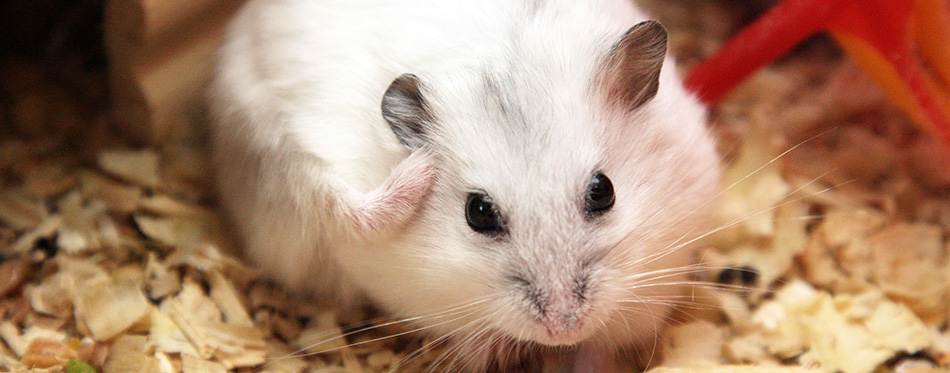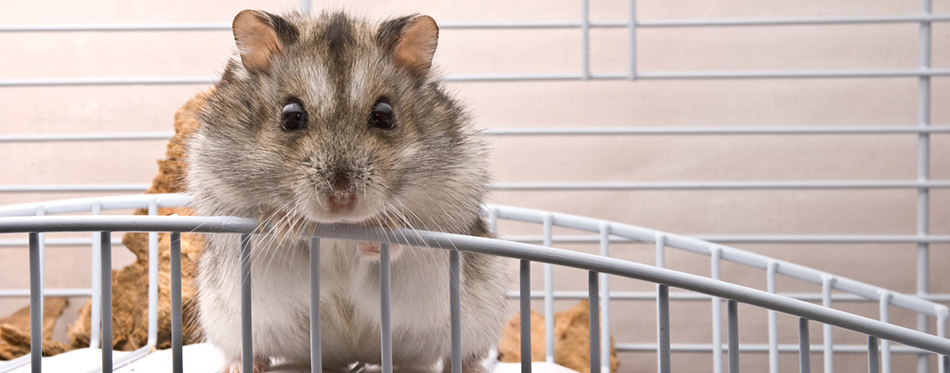When you have a pet, the best way of looking after their health is by understanding your animal and their habits. And this certainly includes sleeping. You may not have automatically associated hamsters with hibernation, and it is true that they do not hibernate in the way that most people think. In fact, many owners think that their hamster has died when they have actually gone into hibernation. But you need to be aware that the state of hibernation could be life-threatening for hamsters, and therefore something that you need to prevent.
But before we go any further, let’s talk about exactly what we mean when we talk about hibernation.
What is Hibernation?
Hibernation is a state that animals use to survive. In wild animals, this occurs during the winter months of the year when the temperatures drop and access to food is scarce. Essentially, they are on standby mode, conserving their energy, while slowing their heart and breathing rate. Scientists have found that significant chemical change occur when an animal is in this state. Some creatures that go through what is known as ‘obligatory hibernation’ include bears and squirrels. They know the winter is coming and prepare themselves accordingly.
Hamsters can be described as ‘permissive hibernators’. They can hibernate at any time of the year when environmental conditions dictate that it is important. This could mean extreme temperatures or a lack of food or water. Usually, these types of animals will go into a deep sleep state known as torpor, which usually only lasts for hours or days until conditions improve. However, the main danger comes from when this state goes on too long. Hypothermia and dehydration are two common threats – and these can put their life in danger.
So, you need to keep your pet hamster out of the conditions that could lead to hibernation.

What Causes Hamsters to Hibernate?
The most common reason why your hamster would hibernate is that they are too cold. Hamster environments should not move too far away from room temperatures, with a couple of degrees leeway either side. If the cold continues for a day or a little longer, this could induce a state of torpor in your pet. It may even take as long as a couple of months before your hamster enters hibernation mode. Rather than putting on weight like obligatory hibernators, hamsters may actually lose weight instead. Some hamsters will never hibernate, whereas others will do so ineffectively, resulting in hypothermia.
Syrian hamsters emerged from a desert climate, and short periods of torpor were necessary for their survival. It is more common for them to hibernate than other breeds. On the other hand, Campbell Syrian or Russian hamster breeds are used to colder conditions and are less likely to hibernate. One of the main threats to hamsters exists when the temperature drops suddenly, leaving their body with no time to enter a state of torpor. It is much more likely that fatal hypothermia will set in if your hamster is put into this situation.
Another reason why your hamster may enter hibernation is that they are kept in dark conditions. It is much less likely if your pet is exposed to strong light for half of the day.
Differences Between Hamster Hibernation and Sleeping
Now, it is important that we answer the question of how you can tell if your hamster has entered hibernation mode or whether they are simply trying to get a bit of sleep. Hamsters tend to sleep between 6 and 8 hours a day and enjoy being cosily wrapped up. Usually, they will sleep during the daylight hours and will become more active at night. If you observe your hamster enough, you should get used to their regular sleeping routine, so it will be much easier to tell if there are any deviations away from it. If your hamster’s activity levels seem to drop and they are sleeping more than 12 hours a day, this is when you should get concerned. You may also notice that they start shaking and shivering.
While the stupor state continues, the hamster may wake up briefly to eat and drink, but if the cold conditions continue, they will tend to stay asleep for longer and longer. Also, you may notice that your hamster has built a bigger nest in an effort to stay warm.
Ask yourself whether there have been any noticeable changes to your hamster’s living environment. Have you moved their box elsewhere? Has it been noticeably cooler or less light in your home for some reason? If you don’t take action to change something, your hamster could move into a state of full torpor, followed by hibernation. And this is potentially lethal.
Signs of Hamster Hibernation
While you should do everything that you can to prevent your hamster from entering a state of hibernation, if this has already occurred, it is important that you recognize the signs and take action quickly. Otherwise, the situation could get more dangerous. In fact, many people think that their hamster has died when they are actually in hibernation. So, they will appear limp and later stiff when picked up. You may be unable to detect a heartbeat and respiration is not consistent. You may not notice any signs that your pet has eaten, drank, or been to the bathroom recently. They may even feel cold to the touch and their eyes could be open too.
Signs of life can be very difficult to detect as your hamster may only breathe at little as once every two minutes. You need to monitor them very closely, or you could also try holding a mirror or spoon in front of them to see if it mists up. Try stroking your hamster to see if you notice any signs of twitching around their whisker area. Gently stretch out their limbs, which may seem to be stiffer than they normally would be. If you are unable to do this, it is more likely that death has occurred has rigor mortis has set in.
Looking After a Hibernating Hamster
If you have determined that your hamster is hibernating, now is the time to take action. If your pet has only been in torpor for less than a day, you may be able to rouse them by simply warming up the environment and keeping it well-lit. Also, ensure that your pet has plenty of access to fresh food and water. You could move the whole enclosure to a warmer room or even wrap them in a warm cloth. Giving them a careful massage can help to get the blood flowing around their system once again.
However, you should avoid using artificial heating devices close to your hamster as these can forcibly pull them out of a state of hypothermia, which is potentially dangerous. Instead, you should try raising the temperature in a gradual manner. Over time, your hamster should naturally start to wake up. Even if they seem fine, it is still a good idea to take them into the vet for a full check-up.
However, if your pet has been in a state for longer than 24 hours, there are likely to be more serious health issues such as dehydration. Malnutrition may also be a problem due to the loss of weight. When your hamster wakes up, it is unlikely that they will be able to deal with big quantities of either food or water. The best thing to do is take your pet into the vet to have nourishment and liquids administered professionally.
But, as they say, prevention is always far better than the cure.

Preventing Hamster Hibernation
Hibernation is so closely linked to the environment that you put your hamster in, so making sure that they have the best conditions is vital. The most important thing to focus on is controlling the temperature. It should stay between 65 °F (18.3 °C) to 75°F (23.9 °C). You can keep a thermometer in there to ensure that it remains consistent. Be careful of any sudden changes which can be caused by direct sunlight or closeness to open windows. Remember, that you should also put their enclosure in a place that gets plenty of access to natural light. Ensure that they have constant access to fresh food, water, and bedding. For more options head over to our guides on hamster food and hamster bedding.
Keep a close eye on your hamster and you will put yourself in the best position to notice any changes in their behavior. Take the time to handle and play with your pet on a regular basis to keep them properly stimulated.
Ultimately, hamsters can hibernate, but they are not creatures which are supposed to. This is why it is so important that you keep your pet in a warm and comfortable environment. Prevention of torpor and hibernation is always going to be the best course of action, but if hibernation does set in, it is important that you take action quickly to give them the best chance of coming round again.

